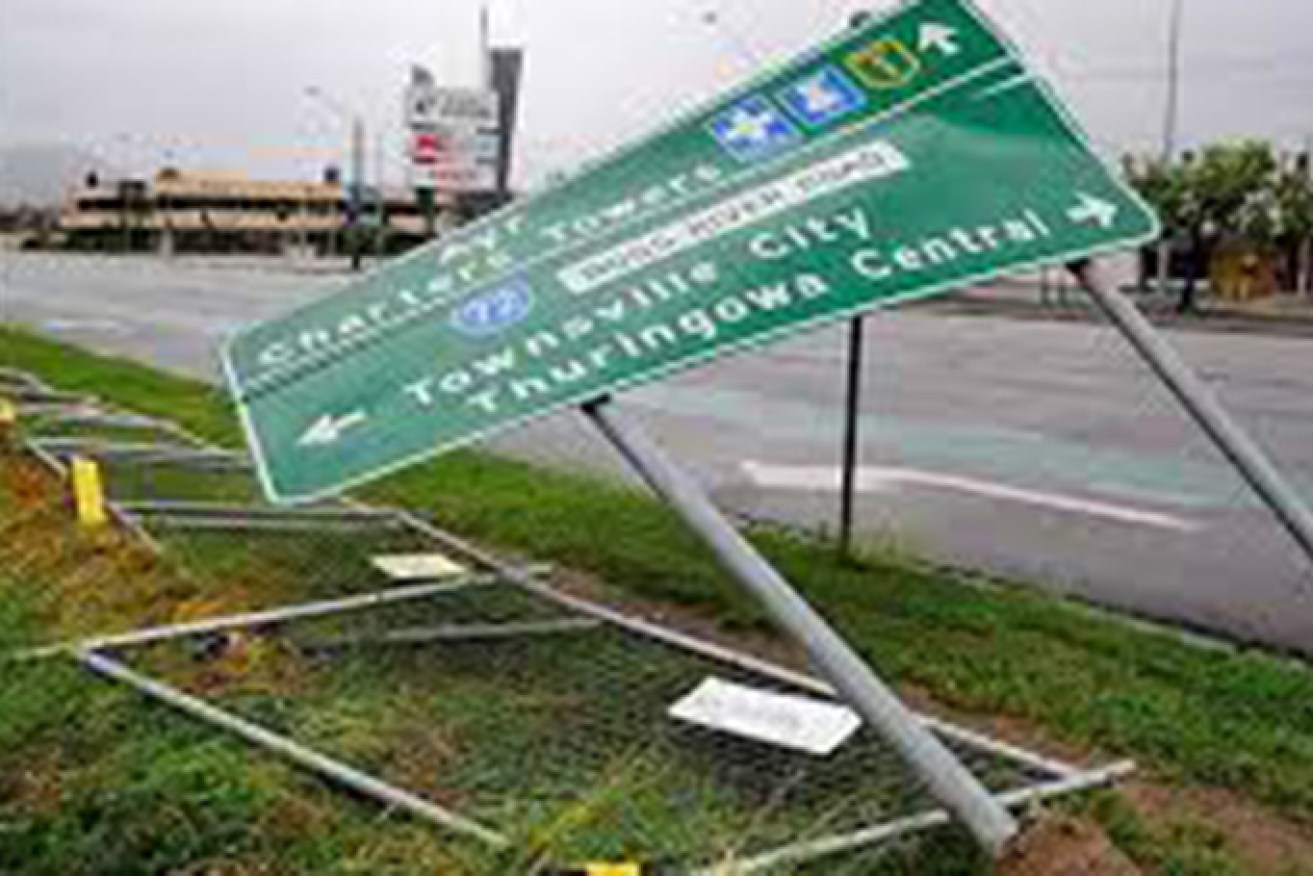Eye of the storm: Funding issues play havoc with natural disaster preparation
Getting all the right information at the right time is the critical element in preparing for and managing natural disasters in Queensland, writes Greg Hallam.


BOM says there is a greater than 70 per cent chance of at least 11 tropical cyclones forming in Australia's vicinity this season. (Photo: AAP).
Settled, agreed and up to the minute data is everything in clutch moments.
Under Queensland’s legislated disaster management system it’s the Local Disaster Management Group (LDMG) that makes all the big local calls.
The LDMGS are invariably chaired by local mayors but include the ranking police officer, the local fire and emergency services head honcho, the SES, utility bosses and community groups such as the Red Cross and the Country Women’s Association.
Importantly the Bureau of Meteorology is a required ex officio member of all LDMGs, linking as necessary by technology.
State and Federal members are not members, but may attend.
Once stood up, the LDMGs meet twice a day , early and before nightfall, often for hours at a time.
The first item of business is always a weather report from the BOM.
Under the architecture of the state’s natural disaster response system, District Disaster Management Committees (DDMGs) can also be activated at the discretion of 1 William St if a disaster is truly regional , involves multiple council areas and is beyond the resources of individual local authorities.
Finally, there’s the overarching, all-powerful Disaster Committee of Cabinet – the QDMC – that exercises official emergency powers through the designated State Disaster Co-ordinator (normally a Deputy Police Commissioner) and makes strategic decisions principally on resource allocation.
Those decisions are usually about the triaging of scarce and competing requirements for critical specialist resources, that is, aerial assets, recovery specialists, even invoking mobilising the Australian Army by agreement with Canberra.
West of the Great Divide, the timing of disaster decisions while still critical is not as critical as in the populated eastern escarpment of the Great Divide where fast flowing rivers and creeks can cause catastrophic flooding in just a few hours.
However, there are still significant challenges.
By way of example, it’s been the case over the past decade that whole communities such as St George and partial communities in towns like Goondiwindi have to be evacuated.
Normally those calls by the LDMG in consultation with the QDMC are made two and three days out from the forecast time of inundation.
The call needs to be made that early as long lead times are required to evacuate those with high care needs, hospital patients and nursing home residents.
That said the authorities are reliant on a mish mash of inputs from old flood gauges and never previously contemplated or war gamed scenarios .
It’s still the case that a critical measuring device at Old Cashmere, a property just outside St George, is voluntarily operated by a spritely Octogenarian grazier, often in the middle of the night.
Last decade, the town of Mitchell was surprisingly cut in two by unexpected floodwaters and the inland National Highway was closed for weeks.
On that occasion, literally no one saw the flood coming as there were only two measuring devices in the Maranoa River between the township and the source of the river aounnd 120 kms north in the lee of the Carnarvon Range.
The challenges presented by short, fast flowing rivers and creeks east of the Divide was well and truly canvassed by Catherine Holmes in her eponymous report into the 2011 floods.
No structure known to man would have saved people in Toowoomba and the Lockyer Valley during that flood.
Holmes rightly said that early advice was the only guaranteed solution to save life. Minutes, not hours, are critical in that situation .
Since that time, Queensland councils have spent just short of $40 million upgrading and installing flood warning telemetry and communication systems, but significant gaps remain in the overall early warning architecture and the BOM remains critically underfunded .
Things have improved dramatically but Queensland’s disaster management system is still a dog’s breakfast of devices, technology standards and ownership.
To be precise, the state needs another 89 river flood stations and 394 rain gauges. It also needs to ensure the digitisation and standardisation of the entire system.
While fully understanding the challenge, Canberra has to date washed its hands of the problem, leaving it up to the state government and councils to fix .
The De Jersey report on the February 2022 Brisbane floods released last week also raises issues about capacity of early warning systems and devices.
There is no disputing the need. Even where BOM capacity exists in the larger coastal provincial cities its performance has been patchy.
The 2019 Townsville floods were a case in point.
Townsville Mayor and LDMG chair Jenny Hill was tearing her hair out trying to get accurate rainfall figures over the Ross River catchment.
It literally was a case of life and death regarding the council’s instructions to the operators of the Ross River Dam.
Hours were critical in this case and Hill got the BOM forecasts with literally minutes – and about 5000 homes – to spare.
Other than in war time there could not have have been a more tense situation.
Mackay had similar problems in its most recent flood where 40,000 of its residents were asked to move urgently in just a few hours. BOM’s forecast tidal surge did not eventuate.
In fairness to BOM, it is kicked to death by the tourism industry and business operators if it makes a call too early.
Both Townsville and Mackay councils in the absence of BOM capacity have spent millions on developing their own flood hydrology capacity.
But such a situation is just not good enough and leads to real issues about absolute points of truth.
It truly is white-knuckle stuff when our civic (and state ) leaders are trying to make calls on incomplete data. It gets very tense and trying in those meetings when the clock is your enemy. There’s no option to sleep on it and wait until morning and then there is the obligation to respond to the ever baying media.
Queensland needs a contemporary statewide flood monitoring capability and Canberra has to step up to the plate in terms of BOM resources.
It’s not good enough to palm the problem off to the lower levels of government. No community deserves to be in a blind spot when it comes to saving life and property..
Greg Hallam AM PSM has been involved in natural disaster preparation and recovery since Cyclone Winifred in 1986. A former chief executive of the Local Government Association of Queensland, he was awarded the National Emergency Management Medal in 2012 and was the longest standing (ex officio) member of the QDMC at the time of his retirement in 2021.












